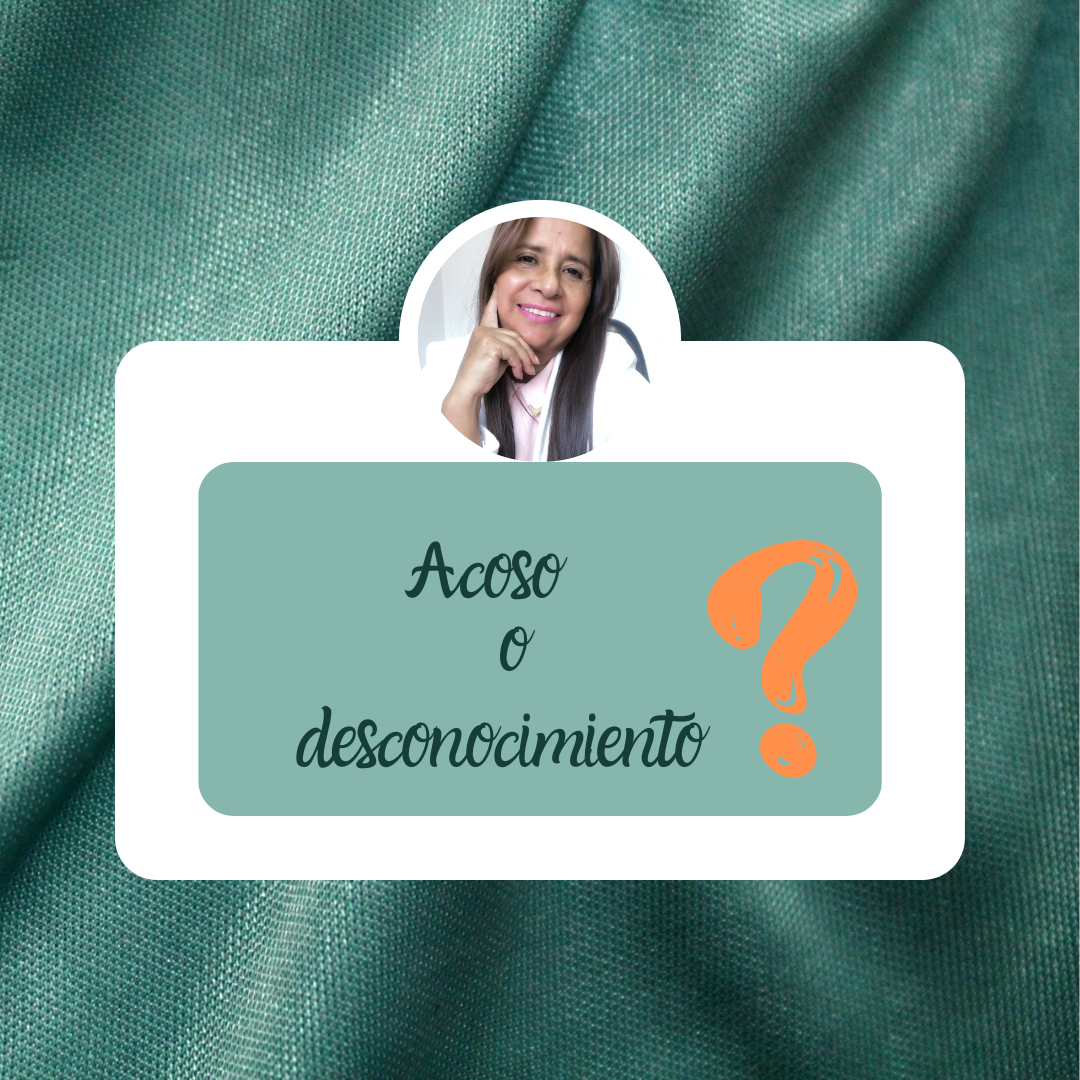
On that occasion I want to refer to this article published on June 6 https://www.infobae.com/america/colombia/2022/06/06/que-pasa-si-una-persona-con-autismo-persigue -y-espia-a-una-mujer/?outputType=amp-type, which is accompanied by an image that in my opinion leaves a wrong and stigmatizing message. (a group of women, one of them holds up a sign that says "Not one less").
According to this publication, a woman felt harassed by a neighbor who constantly looked at her and apparently was attentive to the times the young woman left her apartment, which caused her fear. When they comment to their brother, they decide to call the police, when they go to their neighbor's apartment, they find out that he has autism.
During the story, they talk about levels of autism, mental illness, bullying, non-imputability, etc., they also consult with specialized professionals to understand more about autism and the situation presented. It strikes me that they never ask or refer to how the man with autism feels, it is important to know or inquire about what this person is like, how he communicates, what may have generated these attitudes towards the lady in question, among others details.
Autism, also known as autism spectrum disorder (ASD), is present in childhood and accompanies the person throughout life, affecting communication and social interaction, likewise it can be accompanied by repetitive and restricted interests. It is important to highlight that the ASD condition cannot be limited to a clinical vision of a disorder or an abnormal form of development, but rather, on the contrary, as an expression of human diversity; in which the person travels a different route in the socio-cultural construction process.
Can the situation described in the publication be understood as harassment? Perhaps the man with autism wanted to interact with his neighbor and did not know how to do it, which caused her fear and concern, even more so since she did not know and understand his condition. Perhaps the young man fails to approach a woman correctly and for this reason he acts in this way. These situations are difficult to understand, in many cases, they unintentionally stigmatize and exclude people with autism.
It is also important to reflect on the feelings of the family, how it can be read in the publication, the person who lives with the young person, claims to be their caregiver and is upset by the accusations that are made. Families experience situations in which attitudes are misinterpreted or assumed due to the behavior of our children; this generates fear and impotence due to wrong comments, as in this case, the person with autism was accused of an alleged crime. Also, the news refers to the issue of inimputability, the existence of a crime is suggested or raised that the man with autism had to accept. Beyond configuring or not constituting a crime, it is easy to refer to people with some condition, in this case autism, as a possible perpetrator without even considering interacting with it, or knowing a little more about its particularities, simply considering what the young person could face : "remain in isolation and mental institutes or under therapy supervision", a measure that totally violates human rights, it would have been important to consult what is contemplated in the United Nations Convention on the Rights of Persons with Disabilities (CDPCD), in its Article 15, Protection against torture and other cruel, inhuman or degrading treatment or punishment. The publication also refers to the need for an expert professional to validate the condition of the person, we are still stuck from a medical model, in which the health professional is the one who issues a diagnosis and from this a decision is made or a decision is reached. conclusion. Today Colombia, as a State that ratified the CDPCD, is moving towards a social model of disability in which the person is the first to be consulted and to whom the necessary support and adjustments must be provided so that the right to be guaranteed to communication, to know their life story, and their family or community support network. In any case, this publication makes it clear to us the need to continue working on awareness campaigns about what autism is, not as a diagnostic category, but from the particularities of the person who presents it, and to identify how the environment should respond to their needs, to guarantee a full life in the community.
I want to finish by expressing the need for the media, lawyers and justice operators to delve into these issues, it is necessary to generate truthful and reliable content. It is essential to go to direct sources to know or corroborate the information, in the same way to issue concepts and act respecting the rights of people regardless of their condition. Content like the one I am referencing will generate anguish, helplessness and fear in families and their children, and the most worrisome contributes to the maintenance of myths and stereotypes that end up excluding people with autism from a life in the community.
Betty Roncancio
Lica Director
